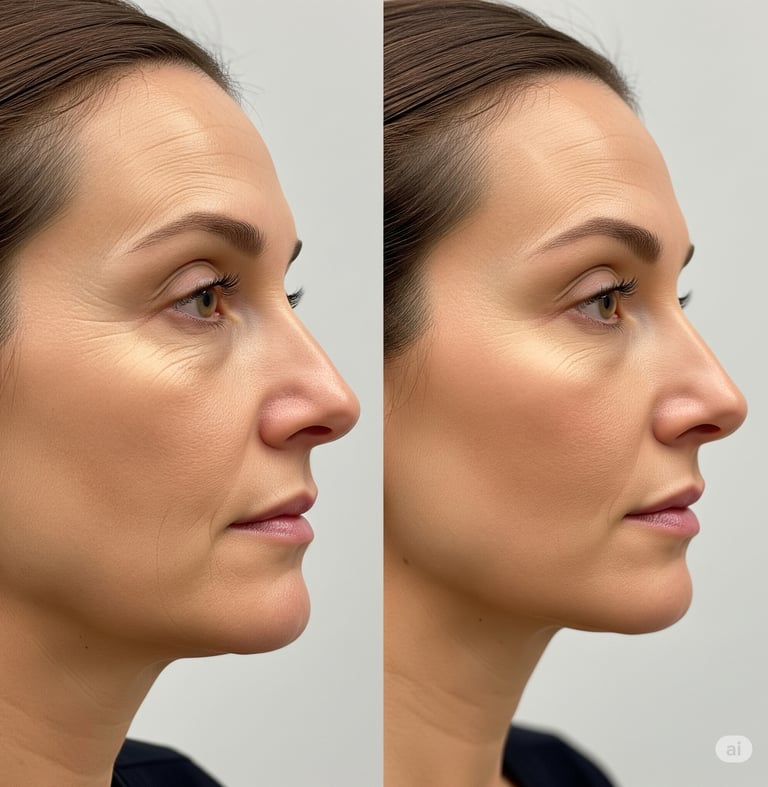Stay updated on what is trending in health. Discover tips and resources for a healthier, balanced life.
Facelift Surgery Explained: Cosmetic vs. Plastic Surgery and What to Expect
Thinking about a facelift? Discover the key differences between cosmetic and plastic surgery, what the procedure involves, and important factors to help you decide if a facelift is the right choice for you.
SURGERIES
Dr. S. Ali
5/27/20253 min read


Thinking About a Facelift? Here’s What You Need to Know About Cosmetic and Plastic Surgery
Ever looked in the mirror and felt like your reflection doesn’t match how young you feel inside? You’re not alone. As we age, it’s natural for our skin to lose elasticity, and sometimes, skincare alone just doesn’t cut it. That’s where facelifts and other cosmetic procedures come in.
Let’s break it all down — in plain, simple terms.
What Exactly Is a Facelift?
A facelift (technically called rhytidectomy) is a cosmetic surgical procedure designed to reduce visible signs of aging in the face and neck. We’re talking sagging skin, deep lines, jowls, and even that stubborn double chin.
But don’t worry — it’s not about changing who you are. A facelift is about restoring what time may have taken away, giving you a more refreshed and youthful look.
Cosmetic Surgery vs. Plastic Surgery: What’s the Difference?
This part often confuses people. Let’s clear it up:
Plastic surgery is a broad field that includes both reconstructive surgery (like fixing a cleft lip or repairing damage after an accident) and cosmetic surgery.
Cosmetic surgery is a type of plastic surgery focused purely on enhancing appearance — like facelifts, nose jobs (rhinoplasty), liposuction, or tummy tucks.
So, all cosmetic surgeries are plastic surgeries, but not all plastic surgeries are cosmetic. Think of cosmetic surgery as the "beauty branch" of plastic surgery.
So Where Does a Facelift Fit In?
A facelift is a type of cosmetic surgery, which means it’s performed to enhance appearance — specifically by reducing visible signs of aging on the face. Since cosmetic surgery is a branch of plastic surgery, facelifts fall under the plastic surgery umbrella too.
Why Do People Choose a Facelift?
There’s no one-size-fits-all reason, but here are a few common ones:
Boosting confidence and self-esteem
Reversing visible signs of aging
Looking more refreshed and less tired
Wanting to look as young as they feel
Preparing for a big life event (weddings, milestone birthdays, career changes)
And let’s be honest — we live in a photo-heavy world. Looking good can make you feel good, too.
What Happens During a Facelift?
Facelifts are usually done under anesthesia and can take several hours. Surgeons typically:
Make small incisions along the hairline or around the ears
Lift and tighten the supportive tissue just beneath the skin that surrounds facial muscles
Remove or reposition fat to enhance natural facial contours
In some cases, add volume using fat grafts or facial implants (like cheek or chin implants) for better balance and rejuvenation
Trim away excess skin for a smoother, firmer look
Close the incisions with fine sutures or staples, carefully placed to minimize visible scarring
You’ll likely need a few weeks to fully recover, but most people say it’s worth the downtime.
Is a Facelift Right for You?
Good candidates are usually:
In good overall health
Non-smokers
Realistic about the results
Not expecting perfection, but improvement
Not quite ready for surgery? No problem. Non-surgical options like fillers, Botox, and laser treatments can also help — though results won’t be as dramatic or long-lasting.
What About the Risks?
Like any surgery, facelifts come with some risks — swelling, bruising, infection, or scarring. But when performed by a skilled, experienced plastic surgeon, complications are rare.
Professional tip: Board certification is essential, but it’s just the starting point. Look for a surgeon who specializes in facial procedures, has strong before-and-after results, and makes you feel comfortable and heard during consultations.
The Cost of Looking Younger
Facelifts aren’t cheap — they can range from $7,000 to $15,000 or more, depending on where you live, your surgeon, and whether other procedures (like eyelid surgery) are added.
Insurance usually doesn’t cover cosmetic procedures, so it’s important to factor in not just the cost of the surgery, but recovery time, follow-ups, and possible touch-ups down the line.
Final Thoughts: Confidence Looks Good on You
A facelift isn’t about vanity — it’s about feeling good in your skin. Whether you’re exploring a small cosmetic tweak or a full transformation, remember: you have options.
You deserve to feel confident and empowered at every age. If you’re thinking about taking the leap, start with a consultation. Ask questions. Get informed. And make the decision that feels right for you.
Sources:
Cleveland Clinic – Facelift (Rhytidectomy): What Is It, Recovery & What to Expect
https://my.clevelandclinic.org/health/treatments/11023-facelift
Johns Hopkins Medicine – Facelift
https://www.hopkinsmedicine.org/health/treatment-tests-and-therapies/facelift
American Society of Plastic Surgeons – Facelift Procedure Steps
https://www.plasticsurgery.org/cosmetic-procedures/facelift/procedure
American Board of Cosmetic Surgery – Cosmetic vs Plastic Surgeons
https://www.americanboardcosmeticsurgery.org/patient-resources/cosmetic-surgery-vs-plastic-surgery/
Before After
Pulse Your Health
Empowering you to achieve your health goals.
Contact
© 2025. All rights reserved.
Disclaimer: The content on this website is for informational purposes only and is not medical advice. Always seek the advice of your physician or other suitably qualified healthcare professional for diagnosis, treatment and your health related needs.
